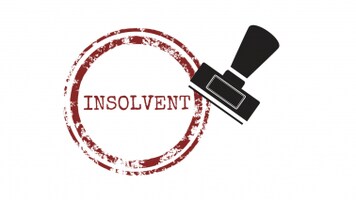"This move will benefit the farmers for the ongoing kharif season, from October onwards. It is a positive development for them and is likely to encourage cotton sowing, despite a fall in cotton prices witnessed in the recent months," ICRA Ratings Senior VP and Group Head Jayanta Roy said in the report.
The 5 percent increase in minimum support price (MSP) of cotton will lead to a rise in sowing of the crop, but is likely to be unfavourable for domestic spinning sector, ICRA said in a report.
"This move will benefit the farmers for the ongoing kharif season, from October onwards. It is a positive development for them and is likely to encourage cotton sowing, despite a fall in cotton prices witnessed in the recent months," ICRA Ratings Senior VP and Group Head Jayanta Roy said in the report.
"However, the move may increase challenges for the domestic spinning companies, as this comes at a time when the COVID-19 pandemic has resulted in demand-side pressures in the global textile markets," Roy added.
The Cabinet Committee on Economic Affairs (CCEA) on Monday approved an increase in MSPs for kharif crops, including cotton, for the year 2020-21.
While MSP for the medium-staple variety was increased by Rs 260 per quintal to Rs 5,515 per quintal, long-staple variety's MSP was increased by Rs 275 per quintal to Rs 5,825 per quintal, translating into an increase of 5 per cent over the level fixed for cotton year 2020 (October-September).
The hike is in line with the announcement made in the Union Budget 2018-19 to fix the MSPs at a level at least 1.5 times that of the all-India weighted average cost of production.
Cotton sowing in key regions in the western and southern belts is yet to start in a meaningful manner, but initial sowing patterns in the northern belt indicate higher acreage for the year, the report said.
Moreover, cotton crops remain highly vulnerable to pest attacks, and output or yield expectations remain contingent on these.
In this context, the locust swarm, which entered India in mid-May 2020 and has hit several parts of western and northern India including Rajasthan, pose a looming threat for the crops as these insects feed on a large variety of crops, it said.
Although state governments across the country are taking several control measures, the impact of these on crop output for cotton year 2021 cannot be assessed as of now, the report added.
It also pointed out that cotton demand and trade prospects in cotton year 2020 have been severely hampered owing to the pandemic.
With demand side pressures in the end-use segments (fabrics and apparels), demand for yarn is also getting impacted, which is likely to result in a decline in cotton consumption for cotton year 2020, it said.
With a double-digit decline likely in global as well as Indian cotton consumption, closing stock levels are expected to shoot up significantly after having remained rangebound over the past two to three years, it added.
After correcting between February and April, owing to a dwindling demand, international cotton prices had gathered some support in May amid increased buying by China to replenish its state cotton reserves.
However, with stocking by China nearing conclusion and continued weakness in its domestic as well as international demand for the country's downstream products, the demand for cotton there is tapering off, it said.
"Demand-side pressures globally and expectations of higher carryover stocks from the current cotton year are likely to result in a negative bias in the international prices," Roy said.
"Expectations of a similar demand-supply scenario in India, entailing supply exceeding demand, and a likely build-up in stock levels, are likely to create a downward pull in market prices. Revised higher MSP, however, is expected to act as a price floor, cushioning the decline," Roy added.













